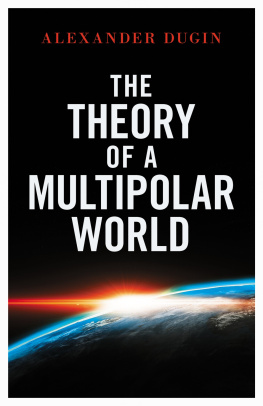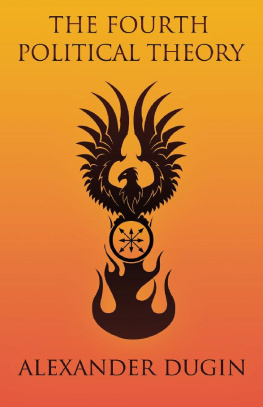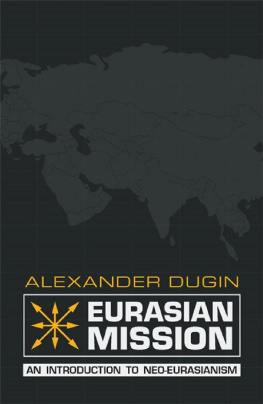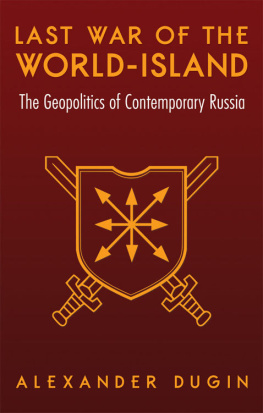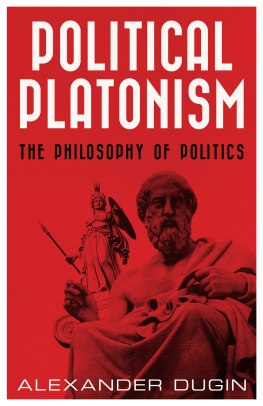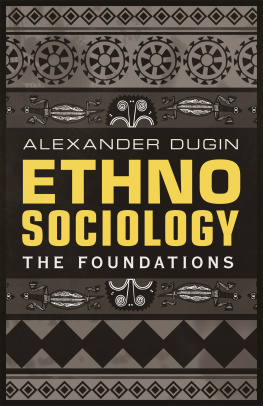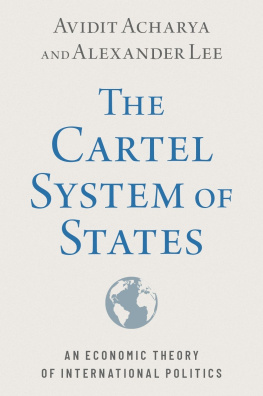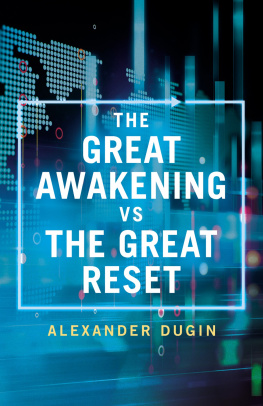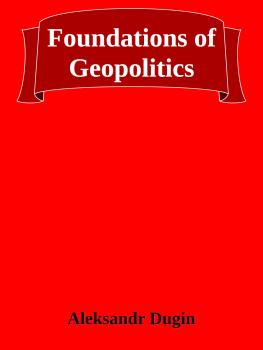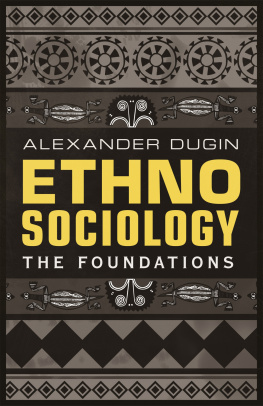
Arktos
London 2020

Copyright 2020 by Arktos Media Ltd.
All rights reserved. No part of this book may be reproduced or utilised in any form or by any means (whether electronic or mechanical), including photocopying, recording or by any information storage and retrieval system, without permission in writing from the publisher.
Arktos.com | Facebook | Twitter | Instagram | Gab.ai | Minds.com | YouTube | Telegram
ISBN
978-1-914208-16-4 (Softcover)
978-1-914208-17-1 (Hardback)
978-1-914208-18-8 (Ebook)
Translation
Michael Millerman
Editing
Constantin von Hoffmeister
Cover and Layout
Tor Westman
Introduction
Multipolarity: Definition of the
Concept and Delineation of Meanings
The First Efforts toward an Elaboration of a TMW
F rom a purely scientific point of a view, a full-fledged and complete Theory of a Multipolar World (TMW) does not exist today. We will not find it among the classic theories and paradigms of International Relations (IR). We will also search the newest postpositivist theories in vain. It is not fully elaborated even in the most flexible and synthetic domainin the sphere of geopolitical studies, where much is often comprehended that in IR remains outside the frame or is interpreted too unfairly.
Nevertheless, more and more works devoted to foreign policy, global politics, geopolitics, and international relations proper are dedicated to the topic of multipolarity. A growing number of authors try to comprehend and describe multipolarity as a model, phenomenon, precedent, or possibility.
The themes of multipolarity, in one way or another, were touched on in the works of David Kampf (in his essay Emergence of a Multipolar World),
Political actors and influential journalists time and again mention the multipolar world order in their speeches and writings. Thus, former US Secretary of State Madeleine Albright, who was the first to call the US the indispensable nation, announced on February 2, 2000 that the US does not want to establish and enforce a unipolar world and that economic integration has already created a certain world, which can even be called multipolar. On January 26, 2007, a New York Times editorial spoke directly of the emergence of a multipolar world, together with China, which takes a parallel place at the table along with other centers of power, like Brussels or Tokyo. A 2008 US National Intelligence Council report on Global Tendencies 2025 declares that the rise of a global multipolar system should be expected over the next two decades.
In 2009, many considered US President Barack Obama a harbinger of the era of multipolarity, thinking that he would give priority in American foreign policy to growing centers of power, like Brazil, China, India, and Russia. On July 22, 2009, Vice-President Joe Biden announced during a visit to Ukraine that the US will try to build a multipolar world.
And yet, in all these books, articles, and pronouncements, there is no precise definition of what a multipolar world (MW) is, nor, all the more so, any sort of systematic and consistent theory of its construction (TMW). Most often, appeal to multipolarity implies only an indication that at present, in the process of globalization, in the undisputed center and core of the modern world (the US, Europe, and, more broadly, the Global West) certain competitors appear on the horizon, rapidly developing, or simply powerful regional states and blocs of states, belonging to the Second World. Comparison of the potentials of the US and Europe, on one hand, and the growing new centers of power (China, India, Russia, the countries of Latin America, etc.), on the other, convinces more and more of the relativity of the traditional superiority of the West and raises new questions about the logic of the long-term processes determining the global architecture of powers on a planetary scale, in politics, economics, energy, demography, culture, etc.
All of these commentaries and observations are exceedingly important for the construction of the Theory of a Multipolar World, but do not at all compensate for its absence. They should be taken into account in the construction of such a theory; however, it should be noted that they are fragments and sketches and fail to rise to the level of even primary theoretical, conceptual generalizations.
Nevertheless, appeal to a multipolar world order can be heard more and more often at official summits, international conferences, and congresses. References to multipolarity are present in a number of important international agreements and in the texts of the conceptions of the national security and defense strategies of many influential, powerful countries (China, Russia, Iran, and in part the European Union). Thus, today as never before, it is necessary to take a step toward beginning the full-fledged elaboration of a theory of a multipolar world in accordance with the basic demands of an academic, scientific approach.
Multipolarity Is Not Congruent with the National, Westphalian Model of Organizing the World
Before we proceed with the construction of a Theory of a Multipolar World (TMW) in earnest, we should strictly delineate the studied conceptual zone. For this, we shall consider the basic concepts and determine the forms of global order that are definitely not multipolar and, accordingly, in regards to which multipolarity is an alternative.
We begin with the Westphalian system, which recognizes the absolute sovereignty of the nation-state and builds on this basis the entire legal field of International Relations. This system, formed after 1648 (the end of the Thirty Years War in Europe), went through a few stages of its establishment and to one extent or another corresponded to objective reality until the end of the Second World War.
This system was born of the rejection of the pretensions of medieval empires to universalism and a divine mission, corresponded to bourgeois reforms in European societies, and was based on the position that the highest sovereignty is possessed only by the nation-state, while there is no authority outside it with legal right to interfere in the internal politics of this state, whatever its goals and missions (religious, political, or otherwise). From the middle of the 17th century to the middle of the 20th century, this principle determined European politics and was transferred with certain modifications to the countries of the rest of the world.
The Westphalian system originally concerned only European states, while their colonies were regarded merely as their extensions , lacking sufficient political and economic potential to claim independent sovereignty. From the start of the 20th century and during the course of decolonialization, that same Westphalian principle was spread throughout former colonies.
The Westphalian model supposes full legal equality among sovereign states. In this model, the world has as many poles of foreign policy decision-making as there are sovereign states . This rule implicitly acts even now by inertia, and all international law is based on it. But in practice, of course, there is inequality and hierarchical subordination among sovereign states. In the First and Second World Wars the distribution of powers among the largest global powers spilled over into the confrontation of separate blocs, where decisions were made in the country that was most powerful among its allies. As a result of the Second World War, in consequence of the defeat of Nazi Germany and the Axis countries, a bipolar world system of international relations formed in the global system, called the Yalta system. De jure international law continued to recognize the absolute sovereignty of any nation-state. De facto , however, the major decisions concerning the central questions of the world order and global politics were made in only two centers , Washington and Moscow.
Next page
